It’s been a long time since I embarked on any crazy notebook modification adventures. But every once in a while, I get a bee in my bonnet about a notebook that is just soooo close to perfect except for this one little thing… and if it seems like something I might be able to fix, I am compelled to try it.
This time, it involved an older Filofax, a pocket Grosvenor from 1999 that I bought in excellent second hand condition. It’s made of a gorgeous soft leather and has nice pockets and is pretty much perfect except that it’s wider than my preferred shape. It also has very small rings (11mm). It reminded me a lot of my two pocket Chelsea Filofaxes, one of which has small rings and one which has larger rings (about 17mm). The extra thickness added by larger rings makes the cover of the Chelsea less wide when it’s filled. And I also had it in mind to use as my new work notebook, where the larger capacity would be needed. So I started thinking of how I might be able to swap out the rings in the Grosvenor.
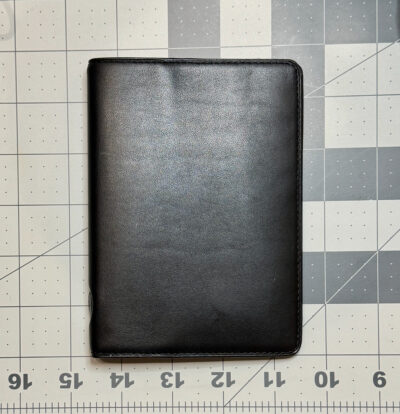
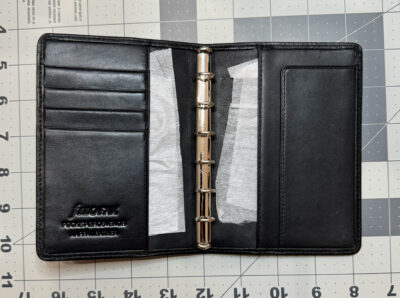
The first thing I did was research ring mechanisms on Philofaxy. I watched the video about how to disassemble rings and reattach them. I looked at all the Filofaxes in my collection and compared their various ring mechanisms. And I began to see that this kind of Filofax modification would be a challenging project.
Filofax pocket sized organizers with the small rings have small metal tabs that hold the rings to a backing plate under the leather. Although my pocket Chelsea uses the same attachment tabs for its larger rings, I haven’t been able to confirm whether any other Filofax models used this method for larger rings. Most pocket size organizers use a different method where two little brackets on the backplate slot into the base of the ring mechanism, or they have two rivets that go all the way through the cover, attaching it permanently.
I thought I might still be able to attach a set of larger rings from an older pocket Filofax, so I bought a cheap old grungy one just to use for parts. I could also have just bought a set of brand new Krause rings from various sources, but it was good practice to remove the rings and cut the cover open to remove the backplate. Unfortunately I didn’t take pictures of that operation! But it led me to discover that the base of the larger ring mechanism is a different length– too short to allow the backplate tabs on the Grosvenor to hold onto it. Most Filofaxes with small rings have a 13cm backplate, but the ones with larger rings are around 12.5cm to 12.7cm from what I’ve seen.
I couldn’t see how I could possibly come up with a way to lengthen the base so it would reach the tabs, or lengthen the tabs to meet the base. I almost gave up on the project. But I decided that the next best thing would be to attach the rings to a thin sheet of plastic and then insert that in the Grosvenor’s pockets. I have another notebook in my collection that was actually made this way, in two separate pieces so the rings and the plastic inner cover were separate from the leather exterior cover–which I promptly swapped for a different one.
For Grosvenor project, I used a plastic folder that I happened to have at home, measuring out the size, and marking where the holes for the brackets of the ring base would need to go. With a little fiddling with an Xacto knife, it actually came together pretty well!

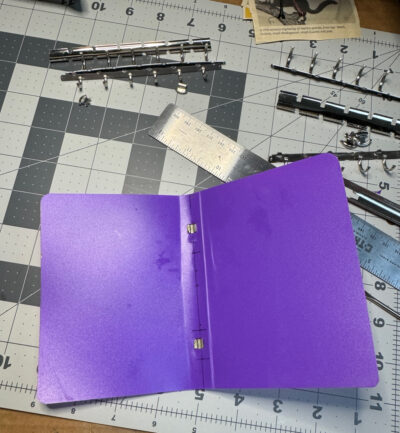

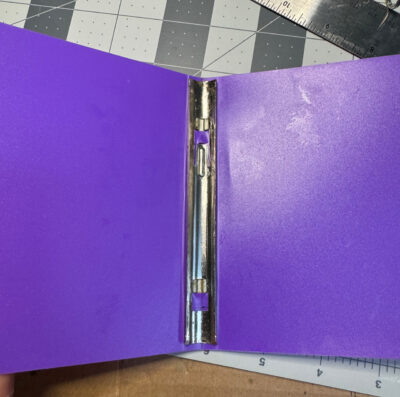
I then had to remove the small rings that were in the Grosvenor. I used the same method of taking the rings apart, but found it more difficult due to the small size of the parts. No matter what size the rings are, the metal pieces have rather sharp edges so you really have to be careful!
When it was time to try to pry the tabs open a bit to release the base of the ring mechanism, I heated them up a bit with a hairdryer, in the hopes that the warmth would make the metal a little more soft and flexible and less likely to break. It was hard to get my little screwdriver under the tabs, but I eventually managed to loosen one of them enough to be able to slip the ring plate out.
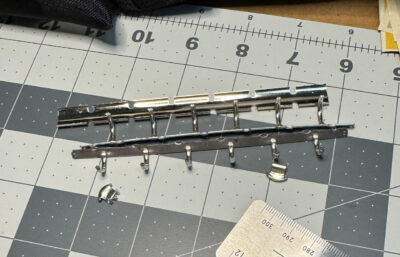
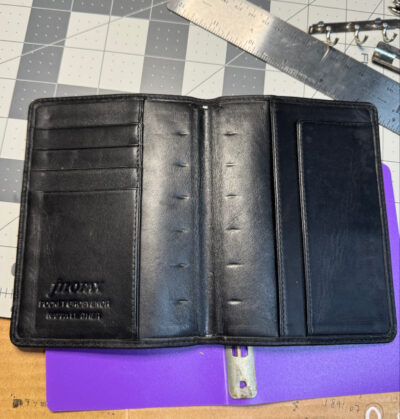
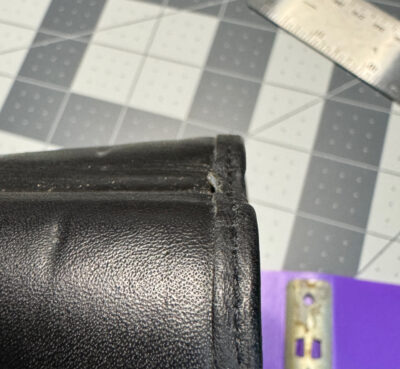
Then it was time to insert my plastic ring holder, but once I fitted it into the leather cover, I realized there was a problem– the plastic didn’t want to stay bent and the organizer was flopping open. I took the plastic out and folded it along the spine, which helped, but it still wasn’t quite right. (It’s Not Right But It’s Okay was running through my head the whole time!) I trimmed the edges a bit more, and trimmed some bits of plastic that were sticking out on the back, but it became obvious that this just wasn’t going to work very well. It was also really ugly having all this purple plastic inside my beautiful Grosvenor! Not okay at all.

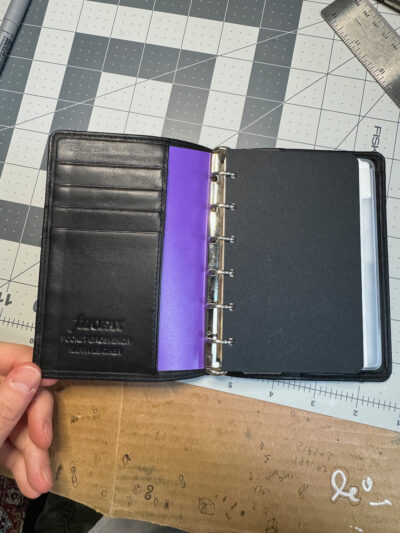
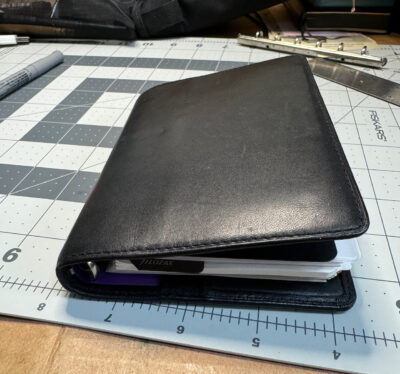
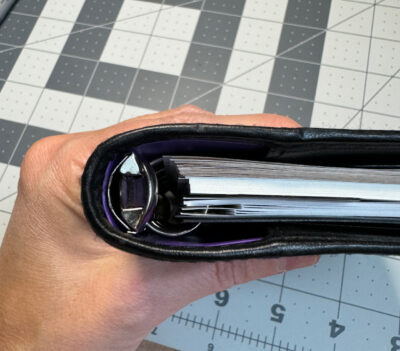
So I tried one more thing: I sliced the purple plastic covers away completely, leaving only the spine part that was sandwiched in the ring mechanism– this piece was actually the perfect length to fit under the backplate tabs. And sure enough, when I carefully pressed the tabs back down again to hold it in, it actually worked!
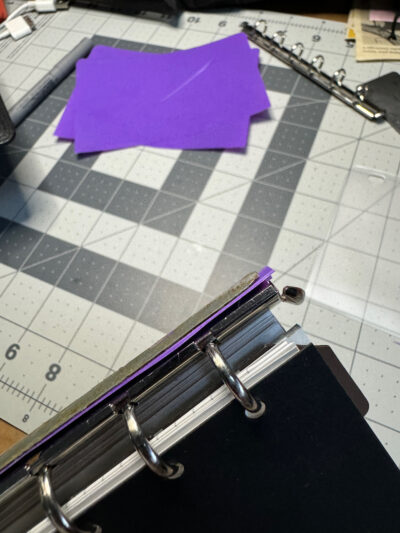
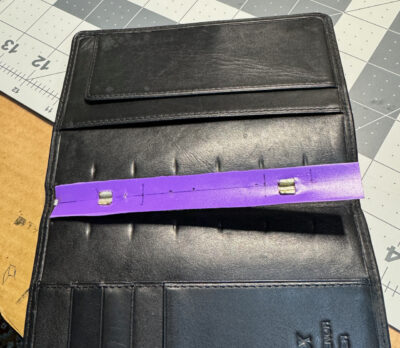


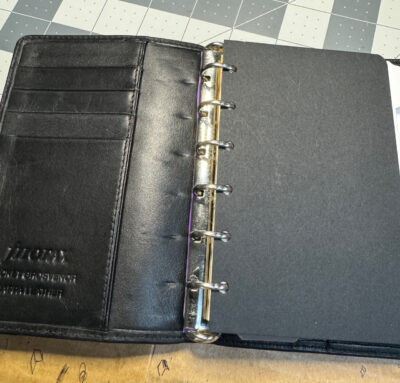
The rings seem to be held in pretty securely, and I now have a Grosvenor with larger rings. It still might not be exactly right, but it’s more than okay! The subtly different proportions are more to my liking and it has a nice chunky feel like my old Chelsea, with tabbed dividers just barely fitting inside the cover. Since there’s an extra layer of backplate, things are pushed a bit further out from the spine than they should be. For most inserts it doesn’t matter, and normal index tabs sticking out just a hair isn’t too bothersome. But unfortunately, the top-opening plastic envelope I wanted to add was too wide and stuck out quite a lot– the envelopes they sell now are a lot wider than the 1990s ones in my collection, which is annoying.
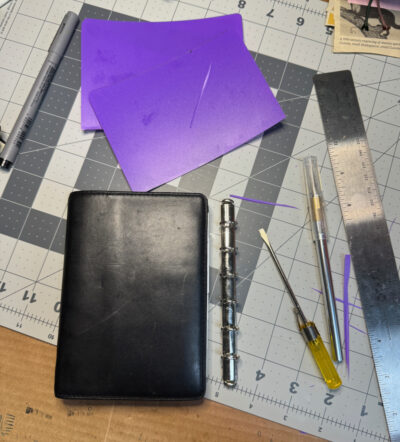
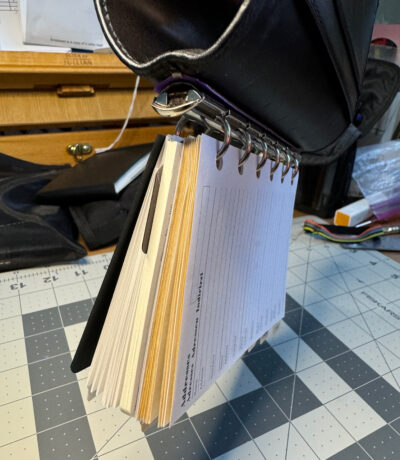
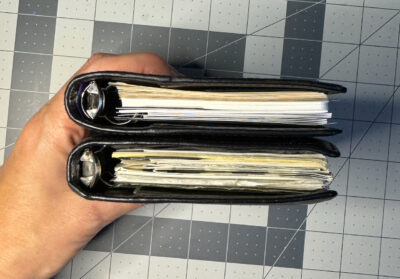
On the downside, I can’t say I have total faith in this ring attachment method passing the test of time. It seems like the purple plastic could easily slip out or tear or wear out. But we’ll see how it goes. My intended purpose for this notebook may be mostly at-home use, so it won’t have to survive being tossed in a bag very often. If I decide it’s not working, I could almost imagine trying to open up the leather on the inside of the spine to see if I could swap out the backplate, actually gluing the wider one under the leather and then sewing it back shut… but I think that might be a more radical surgery than my nerves could handle! I’d probably just reattach the original small rings, praying that being bent back and forth again wouldn’t break the tabs. This whole project deserves a “don’t try this at home” warning, but I’d also say “don’t try this anywhere in public if you’re embarrassed to be seen crying!”
Now you might be thinking “how could she risk destroying such a beautiful and rare vintage Filofax?” Believe me, I struggled with this question too. If I broke the tabs and couldn’t attach any rings to it, the cover on its own probably could be used as a holder for passport-size notebooks, but still, it was really worrying me that I could potentially ruin a very nice item that I’d never be able to replace. That’s why I didn’t allow myself to do this Filofax modification until I’d miraculously managed to buy a second vintage Grosvenor in even better condition! That’s what I call a back-up plan.
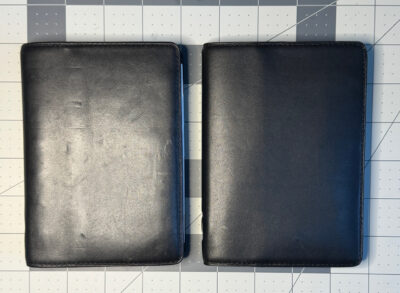
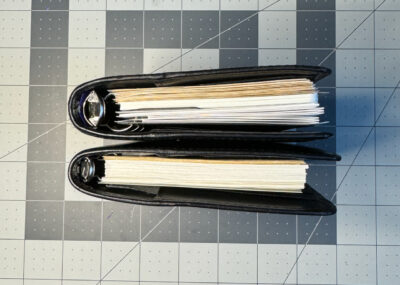

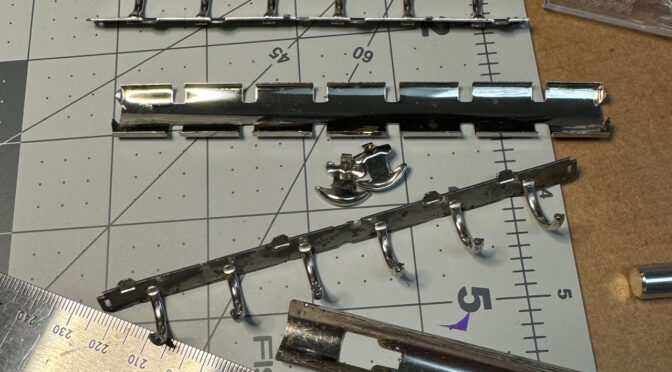
Brava!! Both for your courage and your ingenious backup!
Love this page!!! I have too many journals to count.